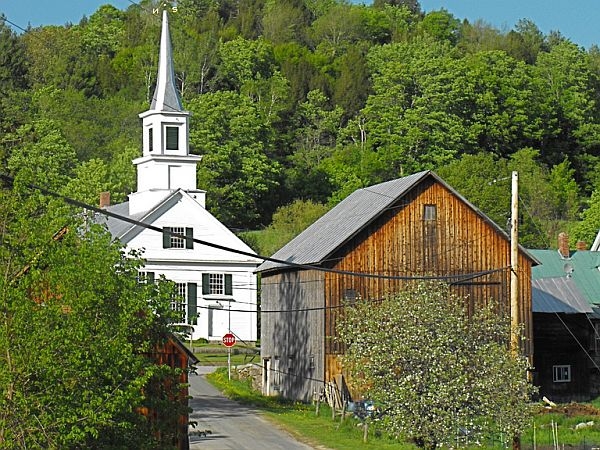
The names of Vermont’s towns and villages, streets and
places mark twists in history, and reveal the character of Vermont’s people.
In this VPR series, we share
stories from the book, "Vermont Place Names, Footprints in
History," by the late Esther
Munroe Swift. The book is considered the authoritative text on Vermont towns.
We learn about Lyndon’s Red Village and what happened to the village of Hale, among many other historical anecdotes.
"Vermont Place Names: Footprints of History," was first published in 1977. The copyright is held by Esther Munroe Swift’s estate, which granted permission for its use.
Monday – Isle La Motte
Esther Munroe Swift writes that the Grand Isle County town of Isle La Motte changed its name for a
time, "to Vineyard. … It may have been that there were a large number of grapes
on the island." Or, Swift writes, "the people of the island are generally of
English and Scottish descent. That being the case, they may not have liked the
French flavor of their town’s name." Whatever the reason, the change was not a
permanent one, in November 1830, the name was changed back to Isle La Motte."
Tuesday – Baltimore
The
Windsor County town of Baltimore was created out of a corner of Cavendish. Esther
Munroe Swift writes, "no on has ever
satisfactorily explained the use of the name Baltimore in Vermont. The city in Maryland was named for George Calvert … who was granted the
colony of Maryland in 1632, but did not live to see it settled. Baltimore is the Celtic word meaning ‘large town,’ which was
appropriate for the capital of Calvert’s colony, but certainly not the case for
the Vermont town. Strangely, there is a Baltimore in Ireland, which is very little larger than the one in Vermont."
Wednesday – Granville
Swift
writes, "Old-timers in Granville recall that there used to be two areas with
distinctive nicknames. Codfish Corners is thought to have taken its name from
the staple item on the Vermont country diet earlier in the century, salt
codfish….The other curious place name in Granville was Puddledock. … It meant a
swampy low-lying place. But the non-Vermonters who created the United States Coast and Geodetic Survey maps did not know that, so the
one for the Granville area shows Paddledock as the location of a lumber camp,
instead of Puddledock."
Thursday – Lyndon
The
Red Village is a hamlet in the southeast corner of Lyndon, and
there are many stories about how it got its name. Swift writes, "One persistent
account claims that it was called so because some Russian exiles had settled in
that area. However, there are several reasons this is not valid." The
most important, she writes: "’red’ was not used in connection with Russia or Russians until after the First World War. And of
course the name of the village is much older than that." Swift writes the
origin is probably, "because many residents had painted their houses and or
barns with red ochre."
Friday – Guilford
The
town of Guilford has a village in its northwestern corner called
Hinesburg, "which took its name from William Hines," an early settler, Swift writes. The
trouble began, when the village wanted a post office. "Washington was willing, but said the office couldn’t be named
Hinesburg, because there already was a Hinesburg post office in Vermont, right where it should be, in the town of Hinesburg. The village residents were even willing to have
their office called West
Guilford, but instead they
got Hale (the name was apparently the brainchild of a Washington clerk)." The office eventually closed in 1903. But
the name didn’t remain, according to Swift, "Disgusted with the whole affair,
the village residents went back to using the Hinesburg name."
Listen to Vermont Edition’s Audio Post Cards From Vermont Towns